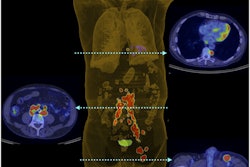Dear AuntMinnie Member,
A new study published this week in Health Affairs concludes that the cost of overdiagnosis and following up false positives in screening mammography could total as much a $4 billion a year in the U.S. healthcare system. But is the estimate based on flawed data?
Researchers from Boston Children's Hospital wanted to put a price tag on the costs associated with following up false positives on screening mammograms, as well as those incurred by overdiagnosis, when screening exams detect abnormalities that would never pose a health threat.
They examined a population of more than 700,000 women who underwent mammography in 2012, coming up with a figure of $4 billion in potentially unnecessary costs -- a number that's much higher than previous estimates for screening mammography.
But the researchers didn't use actual data that enumerated a specific number of overdiagnosis and false-positive cases in their study population; instead, they extrapolated findings from other clinical studies and applied them to their dataset. What's more, the studies they relied on have been widely criticized by advocates of breast screening.
Learn more about the research by clicking here, or visit our Women's Imaging Community at women.auntminnie.com.
PET scans of former NFL players
Another new study, published this week in the Proceedings of the National Academy of Sciences, further confirms the disturbing toll that contact football has on professional athletes.
A group from the University of California, Los Angeles (UCLA) used the PET radiopharmaceutical FDDNP to perform brain scans of former National Football League (NFL) players. They found that the players had radiotracer uptake patterns that were disturbingly similar to patients with known cases of chronic traumatic encephalopathy.
The UCLA group found that the FDDNP-PET scans were detecting a buildup of tau proteins in regions of the brain that control mood, cognition, and motor function -- areas that have been the source of problems for a number of high-profile former NFL players.
Learn more by clicking here, or visit our Molecular Imaging Community at molecular.auntminnie.com.
A three-year residency?
Finally, visit our Imaging Leaders Community for an article that asks a provocative question: Should the length of radiology residency programs be reduced from four years to three years?
The authors of the proposal believe that the standard radiology residency program needs to be restructured to reflect new realities in both education and the workplace. Postresidency fellowships are becoming the rule, so why not incorporate that fact into formal radiology training?
They propose a three-year residency, followed by one or two years of required fellowship training that would allow trainees to focus on either general training or subspecialization. Read more about this intriguing proposal by clicking here, or visit the community at leaders.auntminnie.com.



















